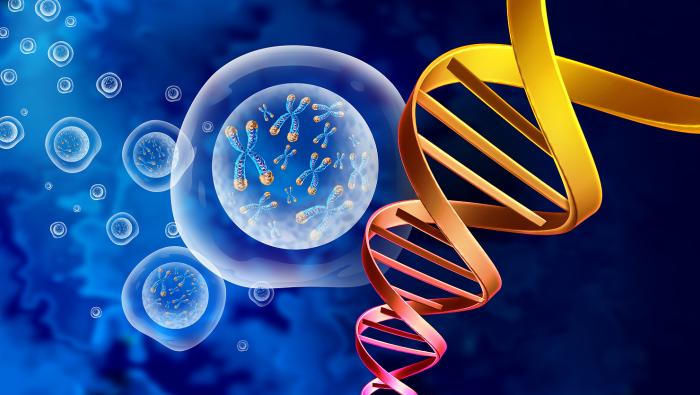CRISPR

Genome Editing Using CRISPR: Revealing Possible Cures
Genetic monogenic diseases are diseases caused by a defect in a single gene. These diseases can be passed from parents to their children by several heredity mechanisms. More than 7,000 genetic diseases are known to science, and though they are considered "rare" due to their relatively low prevalence in the population, more than 150 million people around the world suffer from them. These diseases often lead to serious and incurable medical conditions, but on the other hand – since they are caused by a defect in only one gene – using genetic engineering to repair that gene offers the possibility of a cure.
Genome editing: Copy & Paste
Genome editing technology allows scientists to locate a particular gene they want to repair, cut the DNA helix at that point, insert a normal sequence of the same gene instead of the defective one, and let DNA repair mechanisms kick in and fuse the DNA helix with the amended gene.
The big challenge researchers face is how to accurately and effectively locate where the DNA helix should be cut. This task is far from being simple: We can imagine our DNA molecule as a text file containing more than 20,000 words (or genes). The defective gene causing the genetic disease is the same as one word that was misspelled when this file was copied and that cannot be located easily.
In other words, the tool scientists need for genomic editing should allow them to accurately detect an individual gene and cut it at the right point. Such a tool is indeed available to scientists; its name is CRISPR.
CRISPR: like a text editor – only for genes instead of words
The technology that allows researchers not only to edit and rewrite genes, but also to target and correct a specific gene, is called CRISPR – which stands for Clustered Regularly Interspaced Short Palindromic Repeats.
CRISPR is based on a very ancient natural defense mechanism used by bacteria against invading viruses. Using CRISPR, bacteria are able to detect and destroy any invading foreign DNA or foreign RNA by cutting it out at the right spot. This system enables bacteria to maintain a "memory" of foreign sequences and respond to them quickly at their next encounter. It is therefore regarded as the "immune system" of bacteria.
How does CRISPR work? This system has two components – the first is an RNA code, which is a sequence of nucleic acids, and the second is a protein called Cas9 – a CRISPR-associated protein capable of cutting the DNA strand to eliminate the viral threat. When CRISPR detects a DNA strand whose nucleic acid sequence matches its own encoded RNA sequence, it binds to it at that exact point, similar to placing the marker on a specific character in a text editing program. Next the Cas9 protein kicks in and cuts the DNA strand at that location.
In order to repair defective genes, scientists can design a "correct" DNA sequence to replace the defective one. Cell repair mechanisms then fuse the external sequence into the DNA and fix the cut strand.
A global breakthrough
Until a decade ago, despite tremendous advances in genetic research, in human genome sequencing, and in mapping of defective genes responsible for many genetic diseases, genetic editing technologies were cumbersome, costly, and ineffective. This means researchers did not have effective technological tools to detect and cut DNA sections – until scientists Emmanuelle Charpentier and Jennifer Doudna stepped in. In their breakthrough study in 2012, which became almost immediately a cornerstone of genetic science and for which they were awarded the Nobel Prize in Chemistry in 2020, they showed that the bacterial CRISPR system can be used to cut DNA even outside of bacteria. The technology they introduced was the tool scientists had been waiting for: a genomic editing technology that is relatively inexpensive, simple and, most of all, efficient, capable of making cellular changes at the gene level.
Today, following this breakthrough, hundreds of clinical trials are being conducted around the world to examine the therapeutic applications of genetic editing technologies, mainly for genetic diseases but also for cancer and for other diseases.
What are we working on in our laboratory?
At the genetic editing and gene therapy laboratory led by Dr. Ayal Handel, a pioneer in this field in Israel, we focus on developing genetic editing tools to cure various genetic diseases.
Our laboratory works closely with other researchers at Bar-Ilan University, with medical institutions, and with biotechnology companies in Israel and around the world. Our collaborations include working with Sheba Hospital, Reichman University and Gamida Cell whose work includes genetic engineering of white blood cells.
One of the tools developed by our laboratory is CRISPECTOR – a computational tool capable of analyzing trial results and investigating the performance of CRISPR technology to minimize genetic editing errors. This tool, which was developed in collaboration with Prof. Zohar Yakhini from Reichman University, has gained patent protection and is expected to become an integral part of the development of CRISPR technology.
The research done in our laboratory spans across multiple fields and focuses on three diseases:
- Bubble boy disease
“Bubble boy disease” or SCID – which stands for "severe combined immunodeficiency", is a group of rare genetic diseases that impair the development of white blood cells – resulting in the severe impairment of the body's ability to cope with bacterial, fungal, or viral infection. Some children with this disease are forced to live in a sterile environment that protects them from airborne infections until they undergo transplantation to receive bone marrow from a suitable donor. Since a suitable donor is not always available, genetic editing technology can be an alternative treatment option given its ability to fix the mutation in the patient's cells.
- Sickle cell anemia
A hereditary blood disease that makes red blood cells incapable of carrying oxygen to the body's organs. This disease has severe physiological effects and a tremendous impact on the patients’ quality of life. In Israel, the disease in relatively more prevalent compared to other countries and is mainly observed in the Arab population.
- Cancer treatments
Another aspect of our work, in the field of cancer treatments, is using CRISPR technologies to improve the body's immune response by altering T-cell receptors.
Our laboratory will continue to explore potential cures for diseases using CRISPR-based genomic editing.






